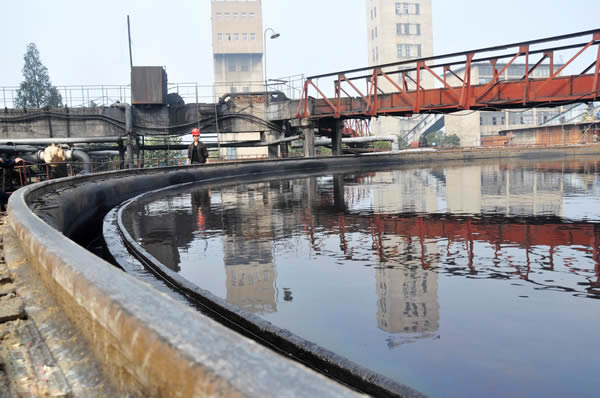Analysis And Optimization of Coal Slime Water Treatment Process

In short, there are the following six types of coal slime water treatment processes:
1. Direct flotation separation→ tailings coal concentration → water pressure filtration. This process can quickly realize the effective closed-circuit circulation of coal slime water, improve the utilization rate of clean coal recycling, and enhance the economic benefits of enterprises. However, this process has large initial investment and high operating costs, and is only suitable for large-scale coking coal washing plants;
2. Slime dense medium separation → tailings coal concentration → water filter press. This process can achieve high-precision sorting of coarse slime with less investment, but the lower limit of recovery of clean slime is only 0.1mm, and the amount of tail coal is relatively large, which has certain pollution to the environment. Therefore, it is only suitable for Coal preparation yards that are all heavy medium and difficult to float coal operation;
3. Coal slime water dense medium separation → coarse slime recovery → fine slime concentration and filter press. The investment cost and operating cost of this method are lower than those of the direct flotation process, and it is suitable for easy-to-separate coarse coal slime with a density exceeding 1.6kg/L. At the same time, the amount of washed coal obtained by this method is large and difficult to dehydrate, and it is widely used in small coking coal preparation plants or thermal coal preparation plants;
4. Coal slime water concentration → direct recovery. Although the investment of this process is small, the economic benefits are limited, the dehydration of coal slime is difficult, and it is difficult to realize the closed-circuit circulation of coal slime water. It is mostly used in small coking coal preparation plants or thermal coal preparation plants;
5. Slime sedimentation tank. The investment and operation cost of this process are relatively small, but since the closed-circuit circulation of coal slurry water cannot be realized, it is more harmful to the environment and is only suitable for small coal preparation plants;
6. There is also a coal washing process suitable for alpine or water-deficient areas, that is, dry coal gangue separation process. This kind of process is simple, low in investment cost, saves water and energy, and has good economic benefits, but the sorting effect is not as good as wet separation.

